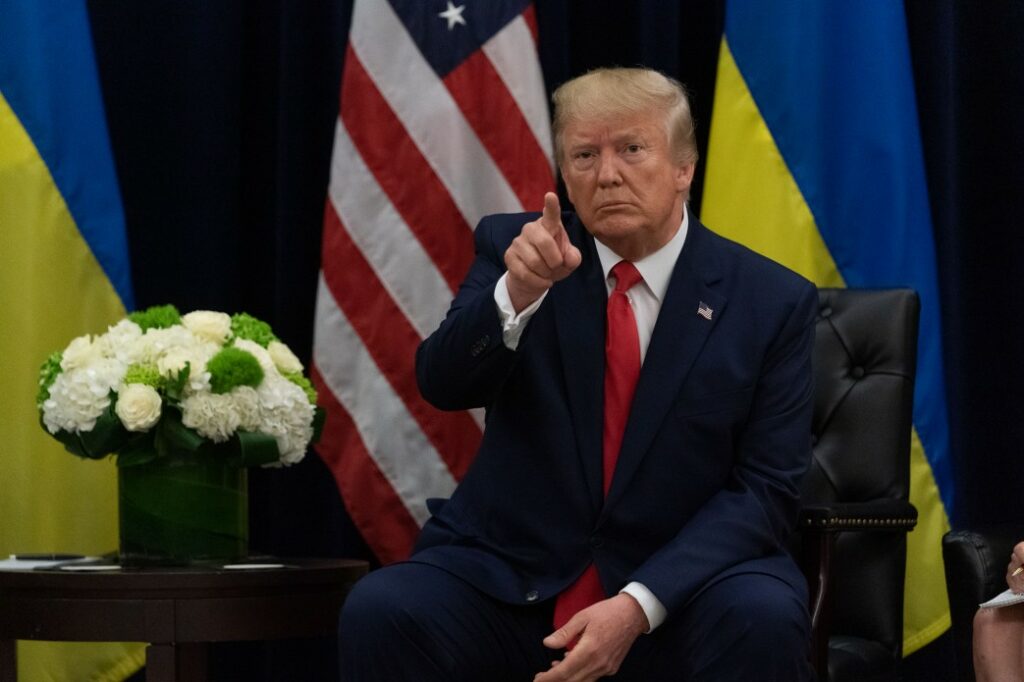
(Rightallegiance.com) – The ongoing conflict between Russia and Ukraine has prompted various international efforts to broker peace. Recently, U.S. President Donald Trump introduced a peace proposal aimed at resolving the war. This article examines the key elements of Trump’s plan, the reactions from involved parties and allies, and the potential implications for the region.
The Russia-Ukraine conflict has persisted for several years, leading to significant geopolitical tensions and humanitarian concerns. In an attempt to mediate, President Trump has proposed a peace plan, which has garnered both support and criticism from various stakeholders.
President Trump’s plan includes a limited ceasefire agreement focusing on specific areas of conflict. Notably, it aims to halt attacks on energy infrastructure and ensure the safety of Black Sea shipping routes. The proposal also suggests easing certain sanctions on Russia, contingent upon compliance with the ceasefire terms. Additionally, the plan involves negotiations over Ukraine’s NATO aspirations and potential territorial concessions.
Ukrainian President Volodymyr Zelenskyy has expressed skepticism about the benefits of the ceasefire, citing concerns over Russia’s commitment to peace. Despite this, efforts have been made to rebuild ties with the U.S., marked by a positive telephone call between Zelenskyy and Trump on March 19. European allies have shown apprehension, fearing that the agreement may heavily favor Russia and undermine regional security. The deal has also pressured Ukraine to make concessions or risk losing vital U.S. aid and support.
Critics argue that the plan undermines Ukraine’s sovereignty and rewards Russian aggression. Concerns have been raised that the agreement could fracture U.S.-European relations, as European nations may be forced to choose between aligning with U.S. demands or maintaining solidarity with Ukraine. Supporters contend that the proposal is a pragmatic approach to ending the conflict, potentially saving lives and resources. They emphasize the importance of diplomatic engagement and the possibility of achieving a sustainable peace through negotiated settlements.
Comparisons have been made between Trump’s proposal and previous diplomatic efforts to resolve the Russia-Ukraine conflict. Critics argue that the current plan lacks a comprehensive strategy and may repeat past mistakes by not addressing the root causes of the conflict. The emphasis on Ukraine making concessions without clear security guarantees has been a point of contention in earlier negotiations as well.
If implemented, the peace plan could lead to a temporary reduction in hostilities, particularly in targeted areas like the Black Sea and energy infrastructure sites. However, the durability of such a ceasefire is uncertain, given Russia’s history of violating previous agreements. The plan’s success largely depends on Russia’s willingness to adhere to the terms and the international community’s ability to enforce compliance. Failure to achieve a lasting peace could result in renewed violence and further destabilization of the region.
President Trump’s peace plan for Ukraine has introduced new dynamics into the ongoing conflict. While it offers a potential pathway to de-escalation, the proposal has been met with mixed reactions and significant skepticism. The coming weeks will be crucial in determining whether this initiative can lead to a sustainable resolution or if it will exacerbate existing tensions. Continued diplomatic efforts and careful consideration of all stakeholders’ interests will be essential in pursuing a lasting peace in the region.